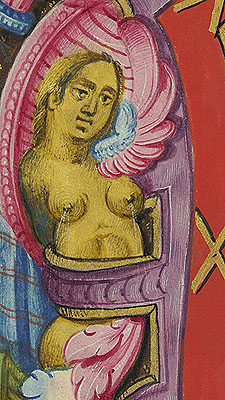
Manuscripts in the Age of Print
![]()
When Gutenberg invented moveable metal type in the 1450s, he chose to
print the most important book in Christendom in order to introduce his
fledgling technology to the market. While he was a mechanical genius,
his ability as a businessman was nothing extraordinary, and he eventually
had to surrender his assets to pay his debts. In the hands of the entrepreneurs
who followed, however, printing quickly established itself as a viable
means of supplying the demand for books–and eventually as the only
way. Soon, printers surpassed scribes in the marketplace by reproducing
the familiar look of the manuscript in a fraction of the time and at lower
cost. By the end of the 16th century, professional manuscript-copying
dropped off precipitously. It was later done only under certain circumstances,
such as in locations where printing presses were rare, or on occasions
that required the pomp that only calligraphy on fine parchment could supply.

Copyright
© 2002 Division of Rare & Manuscript
Collections
2B Carl A. Kroch Library, Cornell University, Ithaca, NY, 14853
Phone Number: (607) 255-3530. Fax Number: (607) 255-9524
For
reference questions, send mail to:
rareref@cornell.edu
If you have questions or comments about the site, send mail to: webmaster.